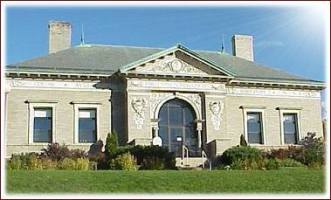
Can trees be part of growing our food?
DEXTER — In the cool and pleasant basement of the Abbott Memorial Library Friday evening (Aug. 3) for the monthly gathering of Dexter Dover Area Towns in Transition (DDATT), about two dozen area people watched the short film “A Farm for the Future” in which the foundations of modern agriculture are questioned by a young farmer trying to figure out how to make her family’s land productive and profitable.
At the moment worldwide, farming and food production are the second largest users of oil energy, after transportation. Harnessing the energy of the sun in more efficient ways is being demonstrated by pioneers in “permanent agriculture” (or permaculture), where all different species, sizes and shapes of plants are coordinated to capture as much sunlight as possible in the form of human food, over long periods of time. Annual tillage, with its high energy costs, is thereby reduced, and food calories per acre can double with the intelligent and intentional propagation of fruits, nuts, vegetables and berries grown on trees and shrubs. One of the permaculture farmers in the film identified himself as a “forest gardener,” saying that with all this biomass producing food “it’s like a half dozen fields stacked on each other.”
Before the Oil Age, agriculture was dependent on the wise application of labor, observation, and experience. Since the 1950s, the development and industrial promotion of chemical pesticides and fertilizers have allowed huge volumes of food to be grown, but at a great energy cost. The film states that for every calorie of food that we eat nowadays, we spend 10 calories of oil.
Discussion following the film centered around what local people have been doing in their own gardens and fields to help increase the amount of good food they grow. Felix Blinn of Brownville quipped that his tomatoes cause bruising, because he keeps bringing so many into the kitchen that his wife gets mad at him. Steve DeGoosh of Sangerville described how the decomposition of plant roots in the soil takes carbon out of the atmosphere to help climate change, and he recommended the book “Gaia’s Garden” by Toby Hemenway as a good source of more information about permaculture.
Garland’s John Gornall and Ed Hummel mentioned that their town will be planting a few dozen chestnut trees around the old school property in what is currently a large mown area. This change, consciously moving away from an open grassy expanse to an eventually tree-dominated and food-producing space will be an aesthetic challenge for the community, because we are all so trained to prefer the tidy order of a lawn to the chaos of a healthy forest.
DDATT’s mission is to help move our local communities into higher levels of self-control and independence, with reliable food production being a keystone. The more we share what we know, the stronger will be our community.
For more information on DDATT and future events, email info@ddatt.org to get on email news list or call 277-4221 or 924-3836.